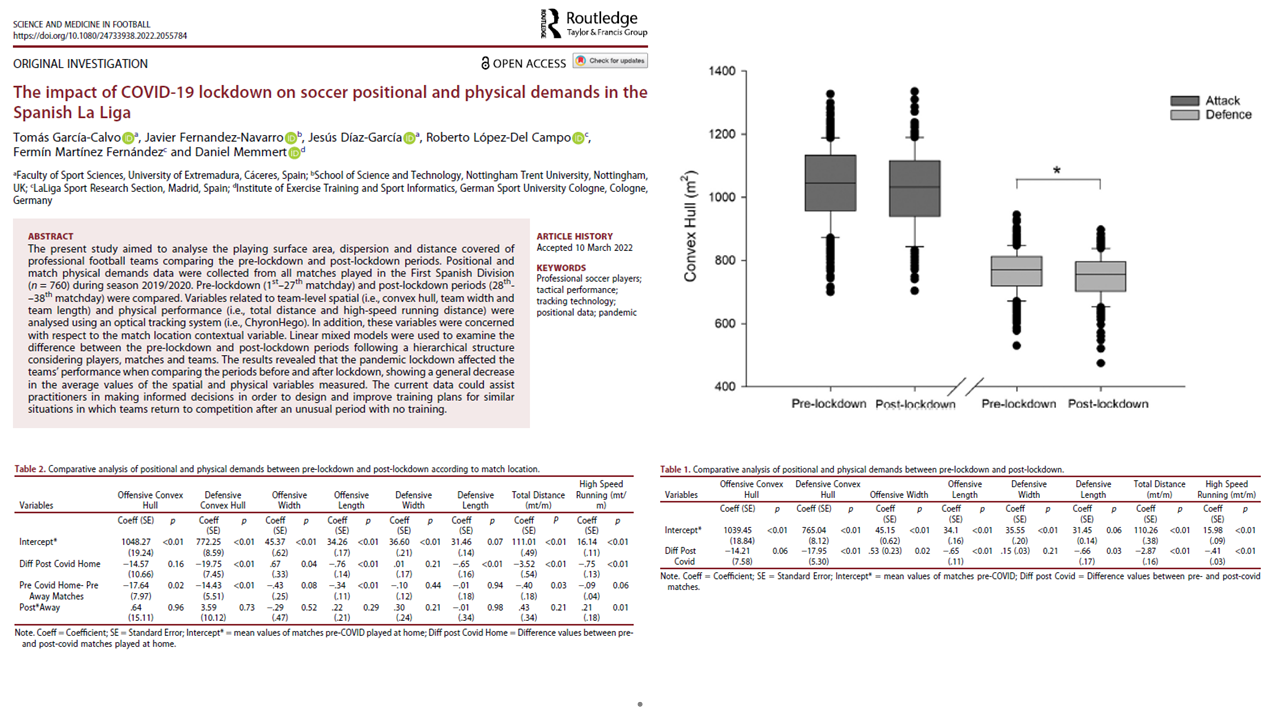
30 Mar The impact of COVID-19 lockdown on soccer positional and physical demands in the Spanish La Liga
Posted at 11:14h
in Paper
The COVID-19 lockdown interrupted the 2019/20 LaLiga season for more than two months. Players trained individually at home, then faced a congested schedule of 11 matches in just over a month. This study analyzed all 760 matches of that season, comparing team positional data and physical demands before and after the lockdown.
Key insights for coaches and performance staff:
- More compact teams: Both offensive and defensive convex hulls (effective playing area) decreased post-lockdown, showing greater compactness in attack and defense.
- Width stable, length reduced: Team width hardly changed, but team length dropped in both phases, reflecting shorter distances between lines.
- Lower physical output: Players covered less total distance and less high-speed running (>18 km/h) after lockdown, highlighting the impact of limited football-specific training during confinement.
- Match location effect diminished: Home teams typically cover more distance, but with empty stadiums this advantage almost disappeared. Interestingly, away teams increased high-speed running when playing without supporters.
Practical applications:
- After long breaks, expect more compact tactical behaviors and plan retraining to recover both physical fitness and team spacing.
- Training design should focus not only on fitness but also on restoring offensive and defensive length to avoid excessive compactness that can limit attacking options.
- Empty stadiums or changes in atmosphere can shift physical and tactical performance—analysts should account for this when interpreting data.
- Use positional metrics (convex hull, width, length) alongside running data to evaluate collective adaptation after interruptions.
Read the full paper here (DOI): https://doi.org/10.1080/24733938.2022.2055784


